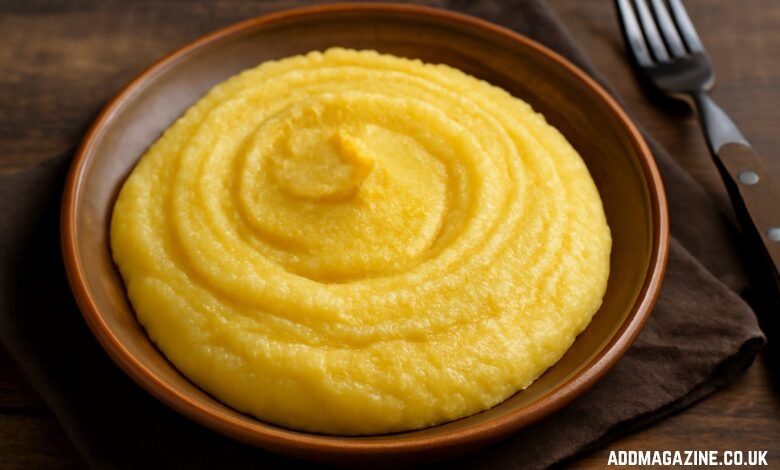Some people mistakenly refer to this traditional dish as “palentu,” possibly confusing it with similar-sounding foods like polenta. While “palentu” might not be the most widely recognized name, it’s a term that has caught on in certain areas to describe a dish that is, in essence, made from cornmeal. This dish is rich in history and remains a staple in various cuisines worldwide. Despite the mix-up in the name, the dish itself has stood the test of time, proving to be both versatile and comforting in kitchens across many cultures.
What Is Palentu?
At its core, palentu is a dish made from cornmeal that is cooked in water, broth, or milk to create a creamy, porridge-like consistency. It’s known for its ability to be either served soft and warm or allowed to cool and solidify, where it can then be sliced and prepared in other ways, such as frying or grilling. The name “palentu” might be used in some regions as a variation of polenta—a popular Italian dish—but it is important to note that the preparation and presentation can differ based on the region.
The History of Palentu
The roots of palentu can be traced back to the introduction of corn to Europe from the Americas in the 16th century. Before corn, grains such as barley, millet, and wheat were used to prepare similar dishes. The versatility and abundance of corn made it a preferred choice, and as cornmeal became more common, the dishes made from it evolved into what we now know as palentu.
In Eastern Europe, particularly in countries like Croatia, palentu has been enjoyed for generations. It has a long history as a family dish, often served as a simple but filling meal. While polenta may be the more famous term in Italy, in many Slavic cultures, such as in Serbia and Croatia, it is referred to as žganci. These regional names and variations reflect the deep cultural connections people have with this humble dish.
How to Make Palentu
Making palentu is simple and doesn’t require many ingredients. Typically, cornmeal, water or stock, and a pinch of salt are all you need. Here’s a straightforward guide to making this dish:
- Boil the Liquid: Start by bringing water or stock to a boil in a large pot. For a velvety, fuller flavor, you can opt for milk instead of water or broth.
- Add the Cornmeal: Once the liquid is boiling, gradually add the cornmeal while stirring constantly to avoid lumps. The ratio of cornmeal to liquid will depend on how thick or thin you want the consistency.
- Simmer and Stir: Lower the heat and allow the mixture to gently cook, stirring now and then for an even texture. The cornmeal will slowly absorb the liquid and thicken. The cooking time typically ranges between 20 to 30 minutes, allowing the dish to thicken to perfection.
- Serve: Once the mixture has reached a thick, creamy consistency, it can be served immediately. If you prefer a firmer texture, pour the mixture into a mold and let it cool. Once cooled, you can slice it and fry or grill it.
Serving Palentu
Palentu is incredibly versatile, making it a great accompaniment to many dishes. It can be served in different ways, depending on the culture and the meal:
- With Meat: Palentu pairs well with meats like grilled sausages, beef stew, or roasted pork. The dish can act as a hearty side that absorbs the flavors of the sauces and gravies.
- With Vegetables: For a vegetarian dish, palentu is often served with roasted or sautéed vegetables, creating a balanced, wholesome meal.
- With Cheese: A sprinkle of grated cheese on top of soft palentu adds richness and flavor, making it even more satisfying.
- Fried or Grilled: After it cools and firms up, palentu can be sliced into portions and fried or grilled, giving it a crispy exterior and soft interior.
Nutritional Value
As a dish primarily made of cornmeal, palentu is a good source of carbohydrates, providing energy and satiety. The dish is naturally gluten-free, which makes it an excellent option for those who have gluten sensitivities or follow a gluten-free diet. Its nutritional content will vary depending on the specific ingredients used in preparation. For example, using butter, cheese, or broth will add more fat and flavor to the dish.
In its most basic form, palentu is relatively low in fat and calories, but it can become more calorie-dense depending on what you add. For a healthier version, you can prepare it with vegetable broth or water and skip the butter or cream.
Cultural Significance of Palentu
Across various cultures, palentu holds a significant place. It’s often considered a comfort food, providing warmth and satisfaction, especially during the colder months. In many parts of the Balkans, for example, it’s a common dish served during family gatherings and is frequently paired with hearty stews or roasted meats.
In Croatia, palentu (often called žganci) is deeply intertwined with family tradition. The dish has been made in countless homes for generations, and it is often associated with agricultural life, where corn was one of the primary crops grown.
In Italy, while polenta is more widely known, palentu holds a similar position in the hearts of many, being served in both simple and elaborate forms. Even though Italians may not refer to it as “palentu,” the dish’s preparation is much the same, and it’s often enjoyed as a side dish to various regional specialties.
Palentu Around the World
Though the dish is particularly popular in European countries, it has also made its way into other parts of the world. In South America, for instance, a similar dish called cuscuz is made from cornmeal and often served with meats, vegetables, or as a dessert with sugar and fruits.
In some areas of the Mediterranean, particularly Greece, variations of this cornmeal dish are also common. Though the ingredients and preparation might differ slightly, the concept of boiling cornmeal into a porridge-like consistency remains the same.
Modern Variations of Palentu
Today, palentu has evolved. Some people opt for instant or pre-cooked cornmeal, which reduces the cooking time and makes the dish more convenient for busy individuals. The dish can also be made with various seasonings and additional ingredients, such as herbs, garlic, or even saffron, to give it a modern twist.
For a healthier take on palentu, many choose to use vegetable broths instead of meat-based stocks, and opt for olive oil over butter. Vegan versions of palentu are also common, often topped with sautéed vegetables, making it a nutritious and satisfying plant-based meal.
Conclusion
Whether it’s called palentu, polenta, or žganci, this humble dish made from cornmeal has endured for centuries because of its simplicity and versatility. It’s a dish that can be enjoyed in countless ways, from a creamy porridge to a crispy, golden slice. Its cultural significance in different parts of the world only adds to its appeal, and it continues to bring people together at the dinner table. Whether you’re looking for a side dish, a main course, or a comforting meal to share with friends and family, palentu is a food that will not disappoint.




